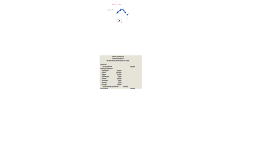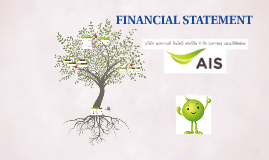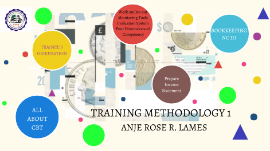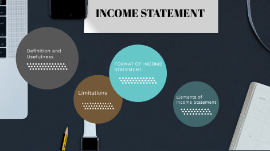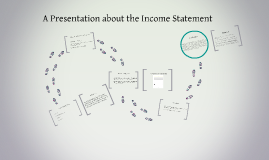Income Statement
Transcript: Income Statement 1- The operating performance of a business firm has traditionally been measured by its success in generating earnings—the “bottom line.” Introduction 2- The income statement summarize to us how a company arrives at its “bottom line.” 3- The income statement, also called the statement of earnings 4- Investors, creditors, and analysts eagerly await companies’ earnings reports. 5- Annual reports include three years of income statements and stockholders’ equity information. Companies make income statement every quarter or year. 6- Earnings are measured on an accrual rather than a cash basis, which means that income reported on the income statement is not the same as cash generated during the accounting period. 7- The income statement comes in two basic formats Multiple-step Format Single-step Format Mr. Haridy Company for Real Estate Common size financial statements 1- Useful analytical tool to compare firms with different levels of sales or total assets 2- Facilitate internal or structural analysis of a firm 3- Evaluate trends , make industry comparisons Common size financial statements Common size income statement 1- Expresses each income statement item as a percentage (%) of net sales 2- It also shows the relative magnitude of various expenses relative to sales ,Profit percentages (%) such as ( gross profit , operating profit , net profit margins ) ,The relative importance of " other " revenues & expenses Common size income statement Net Sales 1- Sales are the major revenue source for most companies Net Sales 2- Total sales revenue for each year of the three-year period is shown ( Sales return and Sales allowance ) 3- When a company's sales are increasing ( or decreasing) , It's a result of price , volume , or a combination of both. Nominal VS Real A related issue is whether sales are growing in “real” (inflation-adjusted) as well as “nominal”(as reported) terms. The change in sales in nominal terms can be readily calculated from the figures reported on the income statement. To adjust sales in income statement from nominal to real we use Consumer price index ( CPI), Which will enable the analyst to make a comparison of the changes in real and nominal terms. To make the calculation to compare real with nominal sales,begin with the sales figures reported in the income statement, and adjust years prior to the current year with the CPI or some other price index. Example: Assuming the CPIs for 2013 and 2012 are 207.3 and 201.6, respectively The adjusted or real sales figure for 2012= (207.3/201.6) * $153,000= 157,326 The nominal growth rate= 40.9%, While Real growth rate= 37% COGS Cost of goods sold 1 - The first expense deduction from sales is the cost to the seller of products or services sold to customers. 2 - The amount of cost of goods sold will be affected (For any accounting period) by the cost flow assumption used to value inventory. The cost flow assumption are ( LIFO, FIFO, Weighted Average ). 3 - The relationship between cost of goods sold and net sales are called the cost of goods sold percentage it is important for profit determination. Gross Profit Gross Profit 1- The difference between net sales and cost of goods sold is called gross profit or gross margin. 2- Gross profit is the first step of profit measurement and is generating after deducting the cost of products or services sold. 3- If the cost of the good sold percentage increase or decrease, this doesn't mean that costs have increased or decreased, the change may caused by decrease or increase in the selling price. 4- The Cost of goods sold and gross profit are complementing each other. generally firms want to maintain the relationship between gross profit and sales Formula Net Sales Cost of Goods Sold Gross Profit = - Operating Expense 1-Selling and administrative expense 2-Advertising expense 3-Impairment charges 4-Depreciation and amortization expense 5-Lease Payments (rent expense) 6-Repair and maintenance expense Operating Expense Selling and administrative 1- Selling and administrative Expense: They are expenses relating to the sale of products or services and to the management of the business . Selling and administrative expenses include: (Salaries, rent, insurance , utilities, supplies ) Advertising Expenses 2- Advertising expenses Advertising costs are expense major in the budgets of companies as marketing is an important element of success Ratio of advertising expenses = Advertising / Net Sales Examples: costs for setting up business website, costs of T.V and radio advertisements and costs of business cards. Impairment Charges 3- Impairment charges They are the expenses recognized to record a decline in a value of a long term asset . Impairment charges may occur in connection with goodwill , when the book value of goodwill exceeds the fair value then book value must be written as impairment charges Lease Payments 4- Lease payments (Rent expenses) Lease payments include the costs associated with operating rentals of






